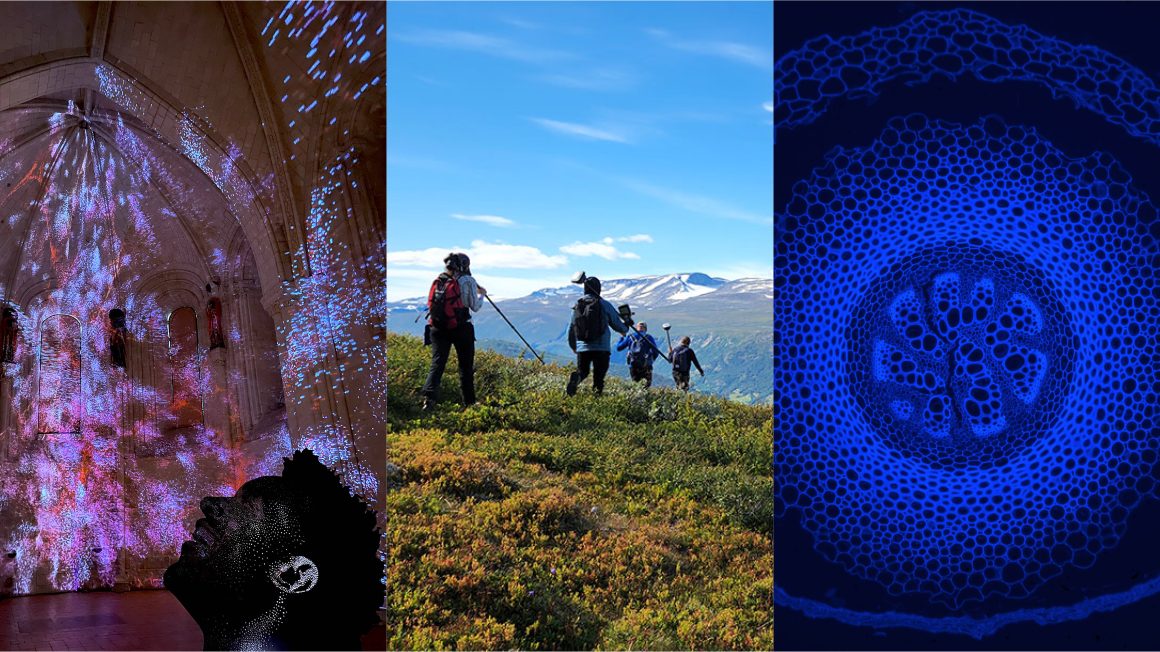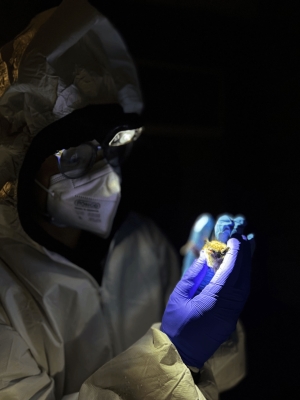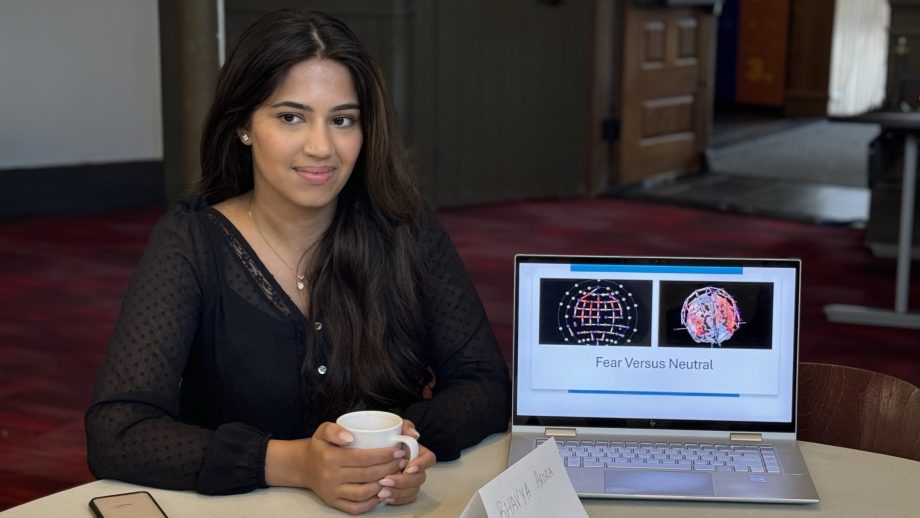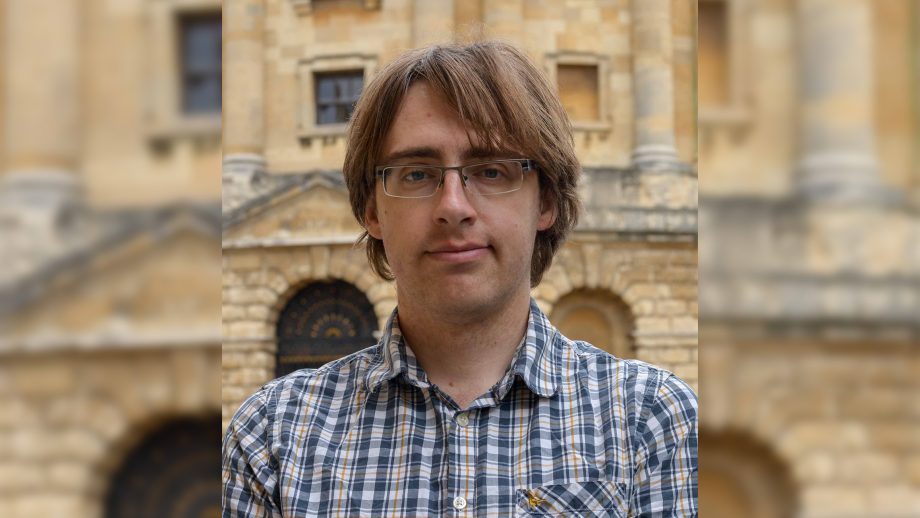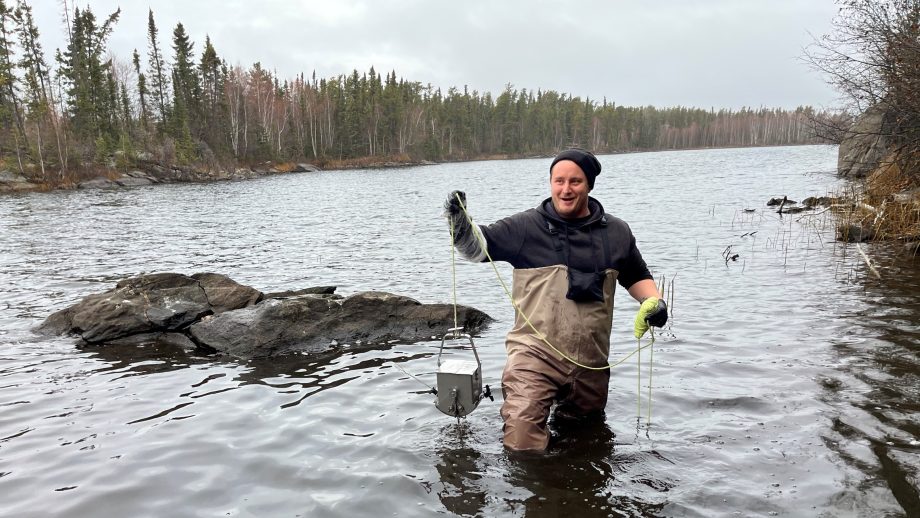The University of Winnipeg’s first annual research photography competition has collected dozens of eye-catching images that illuminate the work of research in a variety of contexts.
Winners of Research in Focus were revealed during the Three-Minute Thesis Competition on March 1. A full photo gallery is available on the Research in Focus website.
“It was incredible to see how the images captured the range of impact UWinnipeg has not only locally but on the world stage,” said Dr. Jino Distasio, Vice-President of Research and Innovation.
A total of 53 images were submitted to the competition. An interdisciplinary panel of judges selected first-place and runner-up winners in six categories, as well as a grand prize winner. The public pitched in too, with 475 votes cast in the Viewer’s Choice category.
“Given that this was the first year we launched this competition, I was blown away by how many submissions we received from across the university and by how many votes we received for the Viewer’s Choice category,” said Lauren Bosc, Lead Program Officer of Research Partnerships in the UWinnipeg Research Office, who coordinated the competition.
“I am always in awe of the research that members of our community are undertaking, and was so happy that our Office was able to support a platform for researchers to share the impact of their work in a visual way.”
Meet the winners
Biology student Taylor Cangemi won the grand prize for “Batwoman by Night,” which depicted her holding a locally endangered bat species, the little brown bat, during a summer research trip to measure, microchip, and release bats as part of the ongoing work of the UWinnipeg Bat Lab.
“Mark-recapture is vital to the long-term monitoring of bat populations and conservation research involving not only bats, but all wildlife,” Cangemi wrote.
Dr. Claire LaBrecque, Professor in the Department of History, won first place in the Artistry in Research category, and tied for first place in the Framing Fieldwork category, for “Projecting the Present into the Past.” The photo depicts a colourful multimedia art installation projected onto the walls and arched ceilings of a French church.
“It truly changed my perception of what I usually see as static architectural forms,” Dr. LaBrecque wrote.
First place in the Community Catalysts category went to Library Systems Assistant Joffrey Abainza, who used a 360-degree camera to capture a behavioural mapping project, undertaken by colleagues Joshua Herter and Sydney Nicholauson, to optimize printing services.
Physics student Thomas Hepworth climbed inside a magnetically shielded room at TRIUMF, Canada’s particle accelerator center in Vancouver, B.C., to get the photo that won him the Faces of Discovery category. Hepworth was at TRIUMF to measure neutrons and better understand why the universe is made almost entirely of matter, instead of equal parts matter and anti-matter.
Dr. Christopher Storie, Associate Professor in the Department of Geography, tied with Cangemi for first place in the Framing Fieldwork category with a shot of researchers trekking down a scenic hillside with surveying equipment while measuring vegetation cover.
First place in the Powered Perception category went to Dr. Rafael Otfinowski, Associate Professor in the Department of Biology, who captured the glow of a cross-section of a stem of club moss, an important plant in Manitoba’s forests. The fluorescence of cells inside the stem was produced using ultraviolet light and was coloured blue to improve contrast.
Biology graduate student Drake Hechter won the Best Description category for a caption reflecting on an image of colitis under a microscope. Hechter noted the diseased cell “embodies the paradoxical nature of research—where amidst the chaos of disease, beauty and insight emerge, inspiring further investigation and discovery!”
Voters selected Dr. Flavia Vasconcellos Amaral, Assistant Professor in the Department of Classics, as the Viewer’s Choice winner for her entry, “What it takes to be a philologist.”
Submissions to the 2025 Research in Focus competition will open in November 2024.

